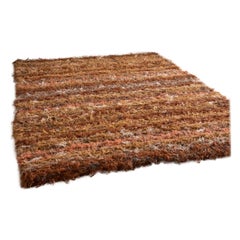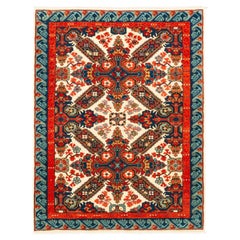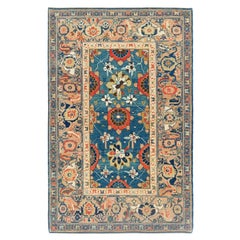Wool Rugs
21st Century and Contemporary Wool Rugs
Wool
21st Century and Contemporary Turkish Revival Wool Rugs
Wool, Organic Material, Natural Fiber
21st Century and Contemporary Turkish Revival Wool Rugs
Wool, Organic Material, Natural Fiber
21st Century and Contemporary Turkish Revival Wool Rugs
Wool, Organic Material, Natural Fiber
21st Century and Contemporary Turkish Revival Wool Rugs
Wool, Organic Material, Natural Fiber
21st Century and Contemporary Turkish Revival Wool Rugs
Wool, Organic Material, Natural Fiber
Early 2000s Wool Rugs
Wool
21st Century and Contemporary Turkish Oushak Wool Rugs
Wool, Natural Fiber, Organic Material
21st Century and Contemporary Turkish Revival Wool Rugs
Wool, Natural Fiber, Organic Material
21st Century and Contemporary Turkish Revival Wool Rugs
Wool, Natural Fiber, Organic Material
21st Century and Contemporary Turkish Revival Wool Rugs
Wool, Natural Fiber, Organic Material
21st Century and Contemporary Turkish Revival Wool Rugs
Wool, Natural Fiber, Organic Material
21st Century and Contemporary Turkish Revival Wool Rugs
Wool, Natural Fiber, Organic Material
21st Century and Contemporary Turkish Revival Wool Rugs
Wool, Natural Fiber, Organic Material
21st Century and Contemporary Turkish Revival Wool Rugs
Wool, Natural Fiber, Organic Material
21st Century and Contemporary Turkish Revival Wool Rugs
Wool, Natural Fiber, Organic Material
21st Century and Contemporary Turkish Revival Wool Rugs
Wool, Natural Fiber, Organic Material
21st Century and Contemporary Turkish Revival Wool Rugs
Wool, Natural Fiber, Organic Material
21st Century and Contemporary Turkish Revival Wool Rugs
Wool, Natural Fiber, Organic Material
21st Century and Contemporary Turkish Revival Wool Rugs
Wool, Natural Fiber, Organic Material
2010s Cypriot Post-Modern Wool Rugs
Wool, Felt
21st Century and Contemporary Turkish Revival Wool Rugs
Wool, Natural Fiber, Organic Material
21st Century and Contemporary Turkish Revival Wool Rugs
Wool, Natural Fiber, Organic Material
21st Century and Contemporary Turkish Revival Wool Rugs
Wool, Natural Fiber, Organic Material
21st Century and Contemporary Turkish Revival Wool Rugs
Wool, Natural Fiber, Organic Material
21st Century and Contemporary Turkish Revival Wool Rugs
Wool, Organic Material, Natural Fiber
21st Century and Contemporary Turkish Oushak Wool Rugs
Wool, Natural Fiber, Organic Material
21st Century and Contemporary Turkish Oushak Wool Rugs
Wool, Natural Fiber, Organic Material
21st Century and Contemporary Turkish Revival Wool Rugs
Wool, Natural Fiber, Organic Material
21st Century and Contemporary Turkish Revival Wool Rugs
Wool, Natural Fiber, Organic Material
21st Century and Contemporary Turkish Revival Wool Rugs
Wool, Natural Fiber, Organic Material
21st Century and Contemporary Turkish Revival Wool Rugs
Wool, Natural Fiber, Organic Material
21st Century and Contemporary Turkish Revival Wool Rugs
Wool, Natural Fiber, Organic Material
21st Century and Contemporary Turkish Oushak Wool Rugs
Wool, Natural Fiber, Organic Material
2010s Turkish Revival Wool Rugs
Wool, Natural Fiber, Organic Material
21st Century and Contemporary Turkish Revival Wool Rugs
Organic Material, Wool, Natural Fiber
21st Century and Contemporary Turkish Revival Wool Rugs
Wool, Natural Fiber, Organic Material
21st Century and Contemporary Turkish Revival Wool Rugs
Wool, Natural Fiber, Organic Material
21st Century and Contemporary Turkish Revival Wool Rugs
Wool, Natural Fiber, Organic Material
21st Century and Contemporary Turkish Oushak Wool Rugs
Wool, Natural Fiber, Organic Material
21st Century and Contemporary Turkish Revival Wool Rugs
Wool, Natural Fiber, Organic Material
21st Century and Contemporary Turkish Revival Wool Rugs
Wool, Natural Fiber, Organic Material
21st Century and Contemporary Turkish Revival Wool Rugs
Wool, Natural Fiber, Organic Material
21st Century and Contemporary Turkish Revival Wool Rugs
Wool, Natural Fiber, Organic Material
21st Century and Contemporary Turkish Revival Wool Rugs
Wool, Natural Fiber, Organic Material
21st Century and Contemporary Turkish Oushak Wool Rugs
Wool, Natural Fiber, Organic Material
21st Century and Contemporary Turkish Oushak Wool Rugs
Wool, Natural Fiber, Organic Material
2010s Turkish Revival Wool Rugs
Wool, Natural Fiber, Organic Material
21st Century and Contemporary Turkish Revival Wool Rugs
Wool, Natural Fiber, Organic Material
21st Century and Contemporary Turkish Revival Wool Rugs
Wool, Natural Fiber, Organic Material
21st Century and Contemporary Turkish Oushak Wool Rugs
Wool, Natural Fiber, Organic Material
21st Century and Contemporary Turkish Oushak Wool Rugs
Wool, Natural Fiber, Organic Material
21st Century and Contemporary Turkish Revival Wool Rugs
Wool, Natural Fiber, Organic Material
21st Century and Contemporary Turkish Oushak Wool Rugs
Wool, Natural Fiber, Organic Material
21st Century and Contemporary Turkish Revival Wool Rugs
Wool, Natural Fiber, Organic Material
21st Century and Contemporary Turkish Revival Wool Rugs
Wool, Natural Fiber, Organic Material
21st Century and Contemporary Turkish Revival Wool Rugs
Wool, Natural Fiber, Organic Material
21st Century and Contemporary Turkish Oushak Wool Rugs
Wool, Natural Fiber, Organic Material





